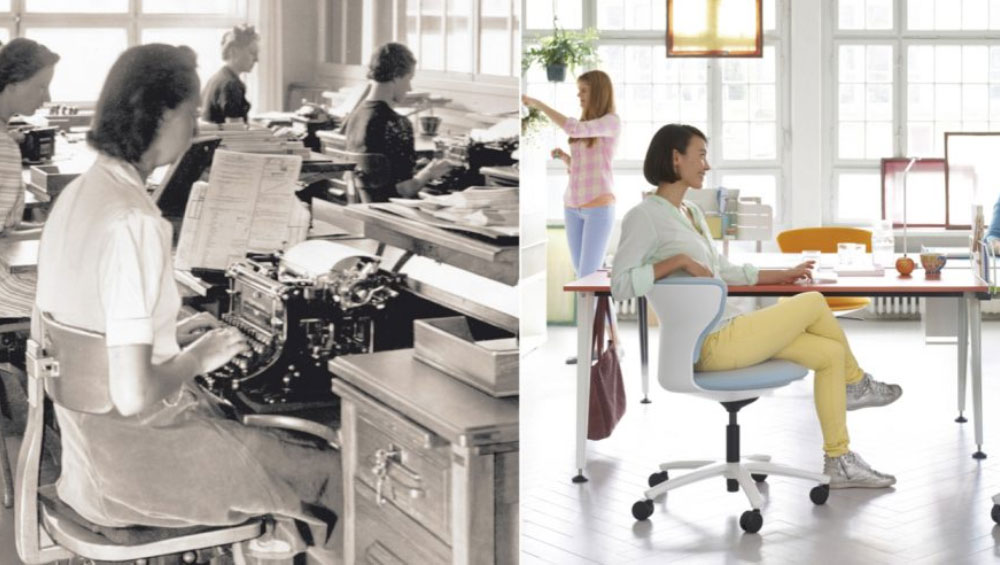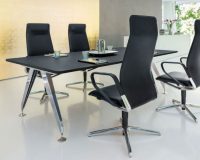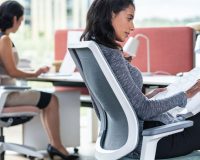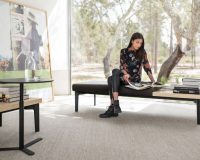The roots of our 21st Century approach to ergonomics lie in a small town called Waldshut, which sits at the southern tip of the Black Forest, on the North bank of the Rhine where it forms a natural border between Germany and Switzerland. It was here ninety years ago that Sedus first introduced the world to the Federdreh, the legendary spring-twist chair that is the common ancestor of every task chair that has followed. It was a trick the firm was to repeat 45 years later with the first chair designed for a new era of dynamic sitting.

Sedus swing up
We are now all used to a world in which we demand the very latest technology in every product and device we use. We expect our cars to incorporate ABS and ESP technologies along with the airbags and satnavs we need to get us safely to and from work each day. For the most part, such sophisticated high-tech is invisible to us, or passes unremarked. The same is true for the technology that is built into our office seating, keeping us comfortable and nurturing our wellbeing throughout the working day. Essential but often taken for granted.
The history of such sophisticated mechanisms is long. In 1871, a young engineer called Albert Stoll relocated from the town of Bad Cannstatt to Waldshut unaware that he was about to reshape the world, and establish a pioneering dynasty that was to pass to his son and grandson. His initial dream had been to create a headquarters and manufacturing base for café seating and rocking chairs using a process that involved busing water to bend wood.
A year later he set up a second firm in Klingnau in Switzerland. By the 1890s, the focus of his work had shifted to office task seating, initially with the creation of a four legged chair which incorporated a swivel and height adjustment mechanism based on a column with a threaded action.
Hi son, Albert Stoll II later assumed both his father’s mantle and pioneering spirit. He proclaimed that ‘the chair is becoming more and more important as a working tool” and began intuitively to develop his own ideas about what we would now call ergonomics, although this was long before the term was even coined.
In 1926, at a trade show in Leipzig, he unveiled his core ideas to the public for the first time. The product he showcased, the patented Federdreh mechanism with its rotating central column and adjustable backrest is now rightly regarded as the progenitor of all modern office seating.
Of course, this wasn’t the end of the story. Three of his four sons went on to play an instrumental role in the creation of the modern German office furniture industry. This was also a move that was to reshape thinking across every continent. Albert Stoll III took control of the Swiss arm of the business, which was to become Giroflex based in Koblenz.
Meanwhile Christof and Martin Stoll took joint responsibility for the Waldshut based business, until it was split up in 1958. Christof took over the reins at the existing site in Waldshut, developing the newly formed Sedus brand. He exhibited the same visionary zeal as his forbears, ushering in a new era of commercial success for the firm along with the creation of a vast new research and development facility in 1970.
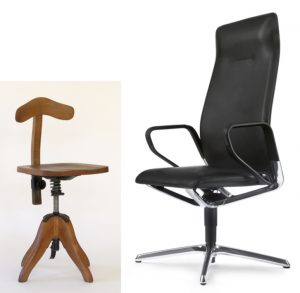
Federdreh (1926) – se:line (2016)
The approach soon bore fruit. In 1973, a fresh generation of innovators developed a mechanism that was to usher in a new era of ergonomic seating design. The synchronous Similar mechanism they created is now the standard technology in office seating across the world, but at the time of its introduction was unprecedented in both its sophistication and foresight. The mechanism controls the tilt of the seat and backrest in a way that mimics the natural movements of the human body. In practice this means that the chair is in constant contact with the user, supporting them in whatever position they are seated and thereby avoiding all the stresses on particular parts of the body such as the lower back that are the cause of so much discomfort, pain and absenteeism.
The visionary approach of Christof Stoll was not limited to the firm’s products however. As far back as the 1950s, he took an active interest in the company’s operations including its environmental credentials. His wife Emma ensured that the workforce was provided with nutritious, balanced diets during the working day.
Both transferred their stake in the business in 1985 to the not-for-profit Stoll VITA Foundation which, amongst other things, campaigns for better nutrition. In 1995, the family business began trading under its current name of Sedus Stoll AG. The Foundation now works from the firm’s original buildings alongside the Stollstuhl Museum which is home to a collection of the products that have shaped the firm’s history for 145 years.
The legacy of pioneering work in the field of office design continues to this day. In the year 2000, Sedus introduced the market to the first task chair with a fully deployed angle of more than 40 degrees, meaning users could work in a position that was almost horizontal. The perfect solution for those working with modern technology. In 2012, Sedus developed a new kinetic seating concept that has now been patented on the basis of six unique principles. It seems that there are no limits to the firm’s capacity to innovate.
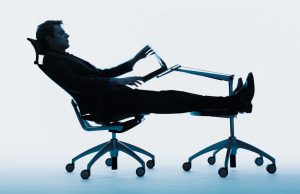
Sedus open up
At last year’s Orgatec, the biannual office design event that showcases the most cutting edge ideas in Cologne, Sedus demonstrated how contemporary, needs-driven solutions respond to the demands of the modern workplace. The 21st Century office must meet both the ergonomic demands of individuals in the design of workstations, allow them to work in a range of postures, including sitting and standing, while also encouraging them to move and collaborate with others.
However, innovation is no longer solely about the design of physical products, but also the use of digital productivity tools. Sedus has developed a new app which allows employees to find the nearest available workstation in a building as well as pinpoint the whereabouts of their colleagues within the office. It’s a satnav for the workplace and entirely in keeping with a long history of innovation linked to the productivity and wellbeing of people.

